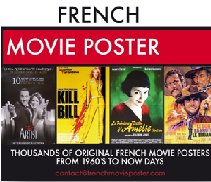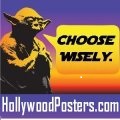The very first motion picture camera patented
in the WORLD.. was patented in England by French-born Louis Aime
Augustin Le Prince in 1888.
The first films were made on a sensitised
paper roll a little over 2 inches wide. In 1889, Prince was able
to obtain celluloid roll film from Eastman when it was introduced
in England.
Prince started commercial development of
his motion picture camera in early 1890 with an updated version.
He arranged for a demostration to M. Mobisson, the Secretary of
the Paris Opera.
On September 16 1890, Prince boarded a
train at Dijon bound for Paris with his motion picture camera
and films. He never arrived in Paris. No trace of Prince OR his
motion picture camera were EVER found. The mystery was never solved.
2 fragments of film is all that has survived
from Prince and his camera. Both taken in 1888, one at 10 frames
per second and one at 20 frames per second.
Everything basically stood still for the next 5 years......
In 1895, George Trajedis, a Greek
showman, approached R. W. Paul who owned an optical instrument
works in Saffron Hill, to manufacture some Edison Kinetoscope
projectors. Edison had not patented them in the UK.
Once they were made... Edison
refused to sell films for pirated machines, so Paul approached
Birt Acres to help construct a camera to shoot their own films.
They obtained film from the American Celluloid Co. of Newark,
N.J. and started filming their own with Birt Acres as the cameraman.
Their first screening was at the
London headquarters of the Royal Photographic Society, 14 Hanover
Square on January 14, 1896.
On February 20, 1896, French magician
Felicien Trewey had the first screening before a PAYING audience
using a Lumiere Cinematopraphe at the Regent Street Polytechnic
in London. He had a 3 week engagement and charged 1s.
The first showing outside of London
was by Birt Acres at Cardiff Town Hall on May 5, 1896. The first
commercial showing of a film that they produced was the Oxford
and Cambridge University Boat Race which was shown at Earl's
Court on May 27, 1896.
Over the next few years, William
Friese-Green, made excellent advancements toward the creation
of the British cameras. Unfortunately his technology was not successfully
incorporated into any practical application. G.A.Smith devised
the first colour system, Kinemacolor, in 1908.
By 1909, Pathe and Gaumont began
flooding the British market with films and the UK fell rapidly
behind.
World War I brought the UK film
industry almost to a halt. Immediately after the war, though efforts
were made to resume production and pick up the industry, films
remained very live theatre oriented, filming a play exactly as
it had been performed on stage and with the same actors and sets.
British film industry did not keep pace with the advances being
made abroad and quickly became technically out of date. The British
public wanted to see American films, and by 1918, there was no
money left for home production.
This continued on a downward trend
until production stopped in 1924. Finally the Parliment stepped
in to help by passing the Cinematographers Trade Bill, which was
designed to ensure there was a guaranteed home market for British
made films. It limited the number of movies coming from other
countries to give home studios a chance. The result was more British
movies, but the majority of them were very poor quality.
The advent of sound offered more
challenges to the British Film Industry's financial stability.
In 1929 for example, 138 films were made and the growth looked
promising. In 1933, J. Arthur Rank, who had started by making
religious films, founded British National. In 1935, he went into
partnership with C.M.Woolf to take over Pinewood Studios.
At the same time, Oscar Deutsch
was building up the Odeon chain of cinemas. But by 1937, the boom
turned into a slump. The year before, the British film industry
had over produced, making 220 pictures. The result was poorly
made, rushed films that were not worth watching and nobody wanted.
This had a backlash effect and opened the door to the American
industry, and American companies started buying the British Production
companies so they would qualify under the home market quota.
Soon with the start of World War
II, the industry took another turn. Many of the studio employees
were engaged in the war, reducing available manpower. Half the
studio space was requisitioned for military purposes, and only
an average of 60 films were produced annually.
The British public demanded more
realistic films, so British studios turned to documentaries and
war related movies.
After the war, the Rank Organization
became the dominant force in the industry. The shift was to make
British films more acceptable to the audiences outside of the
UK. In addition, television caused such a tremendous decline in
attendance that British theaters were closing in record numbers.
Studios switched to producing TV shows and TV movies to stay afloat.
Even though there were a few bright spots over the next few decades
like Hammer Films,
the British production on its own was rather bleak.
In the late 50's, 60's and 70s,
restrictions on the US studios soon had US studios looking at
the UK as a production ground, almost like US studio outposts.
There was such an influx of US production in the UK that American
finances virtually took over the British industry. Some of this
produced a large group of British actors that in the US were thought
of as US actors instead of British... These included such fine
actors as: Albert Finney, Alan Bates, Tom Courtney, Richard Harris,
Julie Christie, Richard Todd, Laurence Harvey, Richard Burton,
Peter Finch, Peter Sellers, Terrence Stamp, Donald Pleasance,
Paul Scofield and directors such as Richard Attenborough, Brian
Forbes and Ken Russell.
The late 70's and 80's saw British
production turning to more television production and branching
into more special effects studios for major US studios like Superman,
Star Wars and the James Bond series. But by the late 80's, there
seemed to be a major decline in US production in the UK.
With this vacuum being created,
there seems to have started a renewal of independently made British
movies. Through the 90's, British production has increased with
such hits as Trainspotting, Brassed Off, Elizabeth, The Full Monty
etc. Hopefully the trend will continue to stablize with more solid
British production.
Here's a list of the British
films in our database





